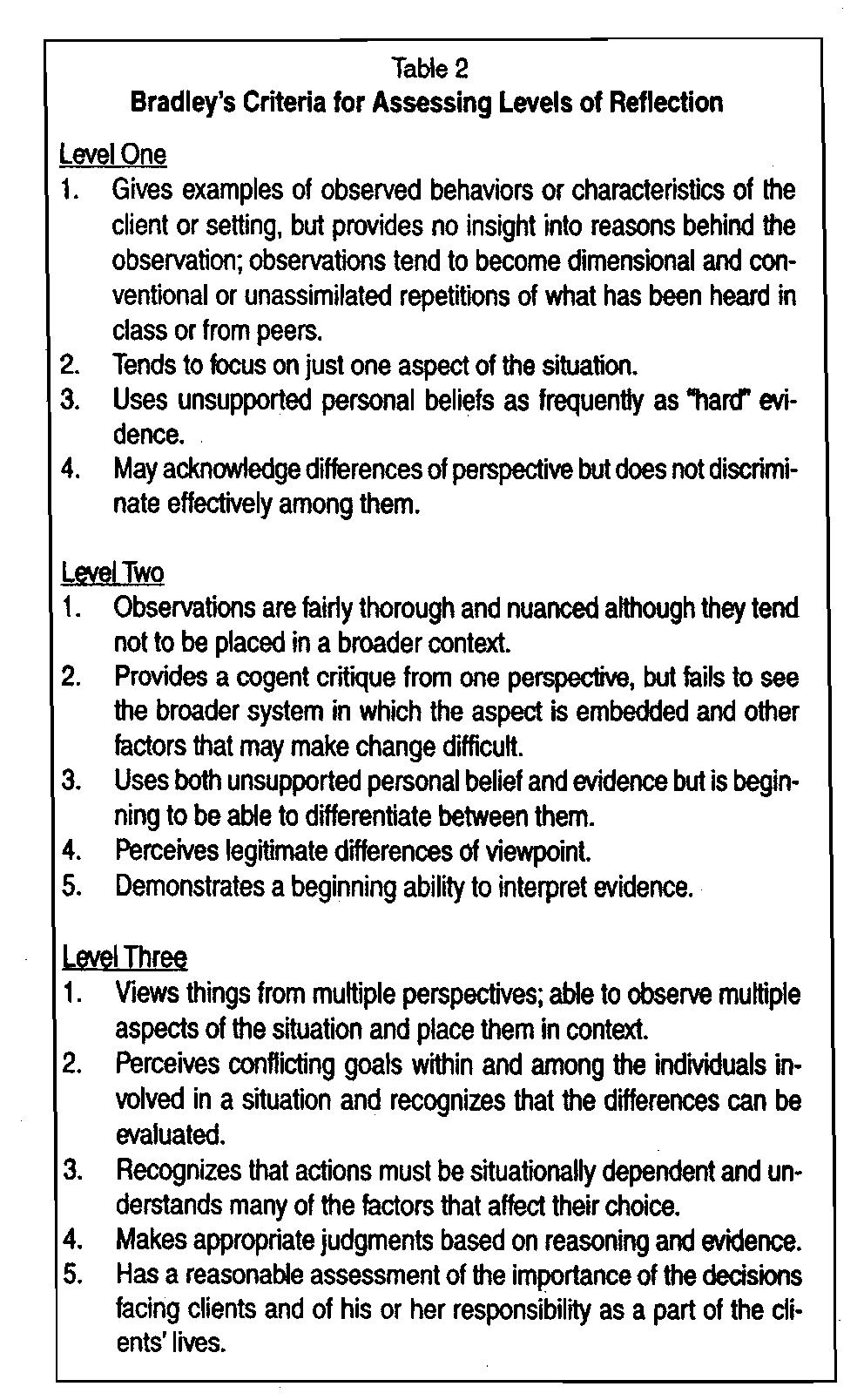Small group discussions, also known as “Reflection Circles”, allow students to understand their experience from a new perspective by integrating their peers’ experience into their own. Initial questions solicit descriptions from individual students, allowing group members to place their own experiences in the context of wider possibilities. Subsequent interpretive questions ask students to share what they learned and what they think it means in the context of the course learning goals. Whether a student is verbally expressive or withdrawn, the opportunity to hear about other student’s experiences provides context and depth for their understanding of their own experience.
Within the small group, the facilitator has the ability to react to individual student’s needs, creating a safe and supportive learning environment. This will encourage an open and honest discussion of expectations and how the students’ values, beliefs, and stereotypes influenced their choices and reactions to others. With this reflection method, the facilitator has the opportunity to adjust questions or re-direct the conversation to emphasize the activity’s learning goals in the context of the individual students’ actual experiences.
Applicability: For this reflection technique, it is important that the students have similar learning experiences. They may have all worked at the same company doing different jobs, participated in the same EL activity, or had similar assignments at different venues. Whatever the variation, there needs to be a commonality of experience allowing students to identify with and learn from their peers’ circumstances. Faculty need not take the role of facilitator; groups can be self-directed or conversations can be led by student or community leaders. However, the facilitator must be a skilled listener and have the authority to adapt questions and direct the conversation in response to the students’ discussion.
The most significant limitation of this approach is that students have no written take-away, only their memories of the discussion. Students could be assigned the questions prior to the discussion group, giving them the opportunity for more thoughtful contributions to the conversation. Following the discussion with a directed writing or journal assignment which requires a comparison between the student’s experience and their peers would reinforce the student’s experiential learning.
Sample Assignment:
Nadinne Cruz, Stanford University, uses the following discussion template (Halcrow,2014).
1. List phrases that describe your actions at the service site
2. List phrases that describe your thoughts at the service site.
3. What contradictions did you sense at the service site?
4. What connections can you make between your service and the course content?
Assessment: Assessing group discussions can be tricky and depends on the facilitator’s course goals. Bradley’s Criteria for Assessing Levels of Reflection (Diagram 4) provides a framework for the facilitator to measure the student’s level of learning from the reflection exercises. Providing the assessment criteria to students prior to the discussion improves the quality of the discussion. Alternatively, asking students to self-assess after the discussion can serve as the written follow-up to the oral activity.
Diagram 4References
Bradley, James. (1995) A Model for Evaluating Student Learning in Academically Based Service. Connecting Cognition and Action: Evaluation of Student Performance in Service Learning Courses, ed. Marie Troppe. Denver: Education Commission of the States/Campus Compact.
Clayton, Patti H. (2013) "The DEAL Model for Critical Reflection." PHC Ventures: Resources/Handouts. www.curricularengagement.com.
Halcrow, Katie. (2014). Reflection Activities: Service-learning’s not-so-secret weapon”. Civic Leadership Initiative. http://mncampuscompact.org/clio/wp-content/uploads/sites/2/2014/07/Reflection-Activities-for-All-Classrooms.pdf
Hatcher, J. and R. Bringle. (2003). Reflection in Service Learning: Making Meaning of Experience. Introduction to Service Learning Toolkit, 2nd Ed. Campus Compact.
Reed, Julie and Christopher Koliba. (2003) Facilitating Reflection: A Manual for Leaders and Educators. University of Vermont. http://www.uvm.edu/~dewey/reflection_manual/acknowledge.html.
“Service-Learning Reflection Resources”. Normandale Community College Center for Experiential Education. N.p., n.d. Web. 15 July 2016.
